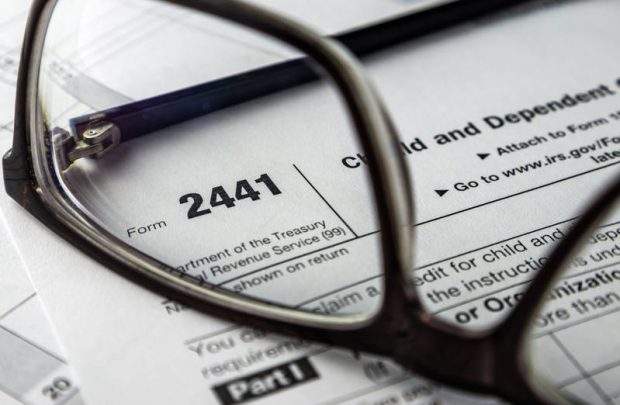Many people rely on dependent care services to take care of their children or other loved ones while they are at work. If you have a child or other dependent for whom you pay for dependent care so that you can work, you might be able to claim a tax credit on your income tax return.
What is IRS Form 2441?
IRS Form 2441 is a tax form that you must file to claim a tax credit for the child care and dependent care expenses that you paid during the tax year. This form is used by people who rely on child care or dependent care services to care for their loved ones while they work. By completing this form, you might receive a credit for some of your child care expenses. The credit has an annual cap of $3,000 for one person or $6,000 for two or more people who received care and is adjusted by your income.
Who qualifies for the Child and Dependent Care Credit?
Not everyone who pays for care will qualify to claim the credit. To qualify, you must meet the eligibility criteria. Your loved one’s care costs must have been paid to allow you to work outside of your home or to search for a job.
The person for whom you paid for care must be a child up to age 12 or someone who has mental or physical disabilities. If you file your tax return with a status of single or head of household, you must have earned income during the year. If your status is married filing jointly, you and your spouse must have both earned income, have a disability, or be enrolled as a full-time student. In most cases, people who file as married filing separately will not receive the tax credit. The person or business that you paid for the care cannot be someone who is in your household or a child who did not reach age 19 by the end of the tax year.
How to fill out Form 2441
Form 2441 is used to prove that you meet the eligibility requirements to claim the credit, to report the costs that you paid, and to report your earned income. Part I of the form is where you will list the person or persons who provided the care for which you paid. You will also need to list the address and Employer Identification Number or Social Security number for each care provider along with the paid amount.
If you received benefits for dependent care, you will next need to complete Part III of the form before you complete Part II. If you did not receive benefits, you will fill out Part II first.
Part II is the section in which you will calculate the amount of the credit for which you are eligible. In this section, list the name, SSN, and the expenses that you paid for each person who received the care. If you are claiming the credit for care for more than one person, add up the amounts that you paid and enter the total on line three. If you filled out Part III first, you will enter the amount from line 31 of Part III. You cannot enter more than $3,000 for one person or a total of $6,000.
You will then enter your earned income and that of your spouse on lines four and five. You will enter the smallest amount from lines three, four, or five on line six. You will then write down the amount that you entered on line seven of your Form 1040 or line 36 of Form 1040NR on line seven. Next, you will refer to the chart to find the decimal that corresponds to the amount that you entered on line seven and enter that decimal on line eight.
You will next multiply the amount on line six by the decimal amount on line eight and enter the result on line nine. If your income is lower, you will be able to keep a greater amount of the credit. You will then enter the limit of your tax liability from the worksheet on line 10. You will then enter the credit amount, which is the lesser amount of line nine or 10 on line 11. This is your credit and should be entered on line 49 of Form 1040 Schedule 3 or line 47 of Form 1040NR.
Part III is for people who received benefits for dependent care. These are benefits that people receive from their employers to help to cover the costs of child and dependent care. If you received dependent care benefits, you will see the amount on your W-2 form in box 10. Enter this amount on line 12 in Part III. You will then write in the amount of any benefits that were carried over from a prior year on line 13. You will then enter any amount that you will be carrying over or forfeiting on line 14.
Follow the instructions for Form 2441 to adjust your benefits on lines 15 to 26. The adjustments will be based on your earned income, the benefits that you received, and your tax filing status.
On lines 27 to 31, you will begin to figure out any child and dependent care tax credit for which you might be eligible. Once you enter the calculated amount on line 31, you will then enter it on line three of Part II of the form. Continue filling out Part II by following the instructions to claim your credit.
The government understands that many people rely on child and dependent care to enable them to work and wants to provide tax credits to people so that they can continue working. Taking the child and dependent care tax credit for your childcare or daycare expenses can help you to reduce the taxes that you might have to pay. It is not a refundable credit, however. This means that if you do not have any tax liability, you will not receive a refund of the credit.











No Comments